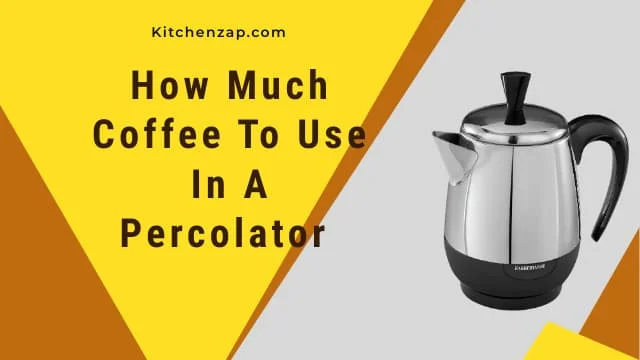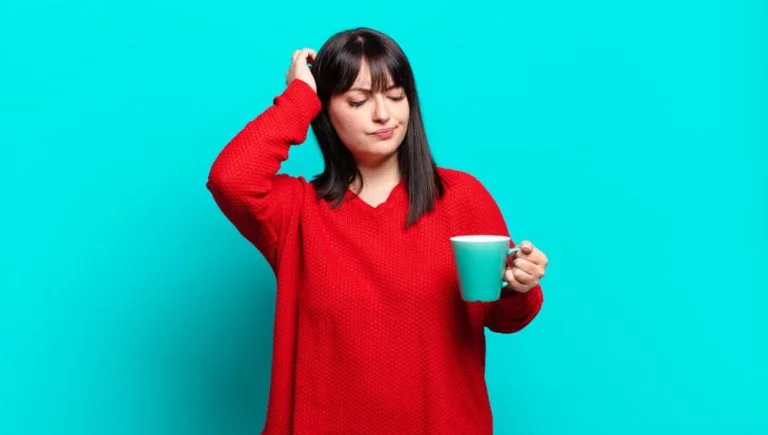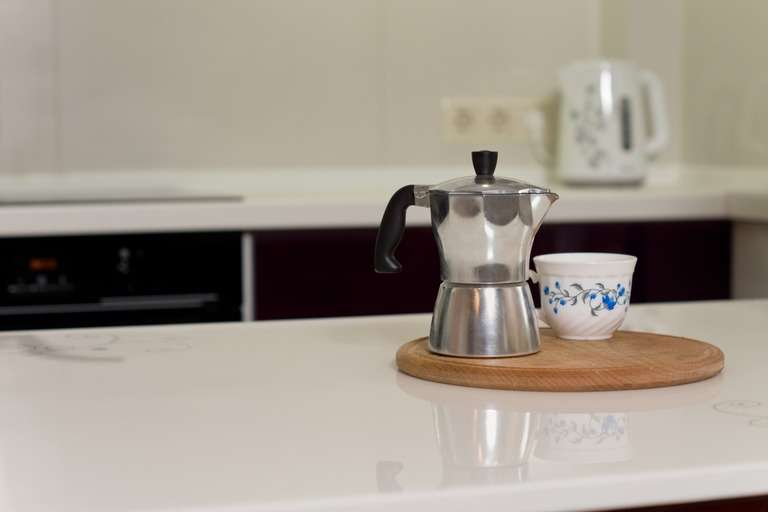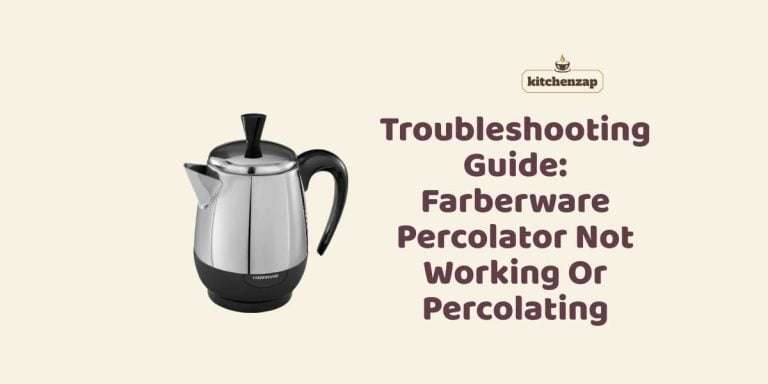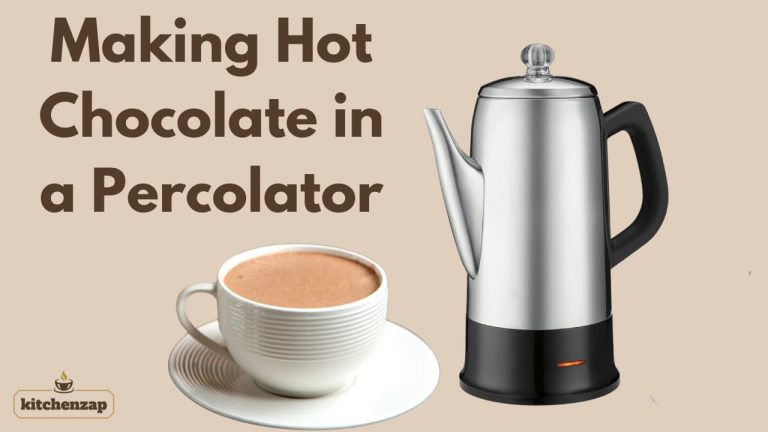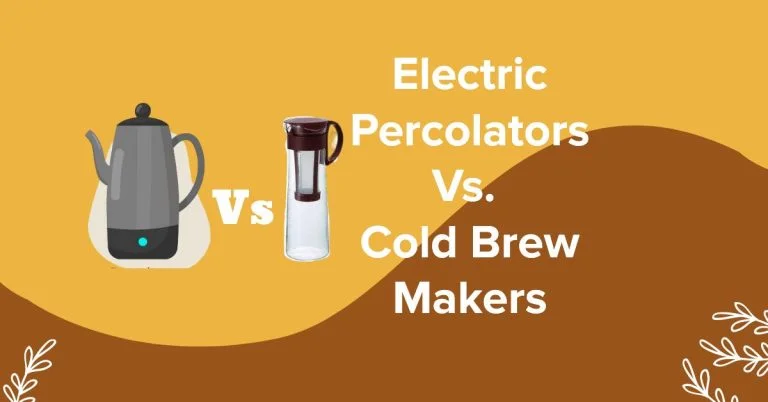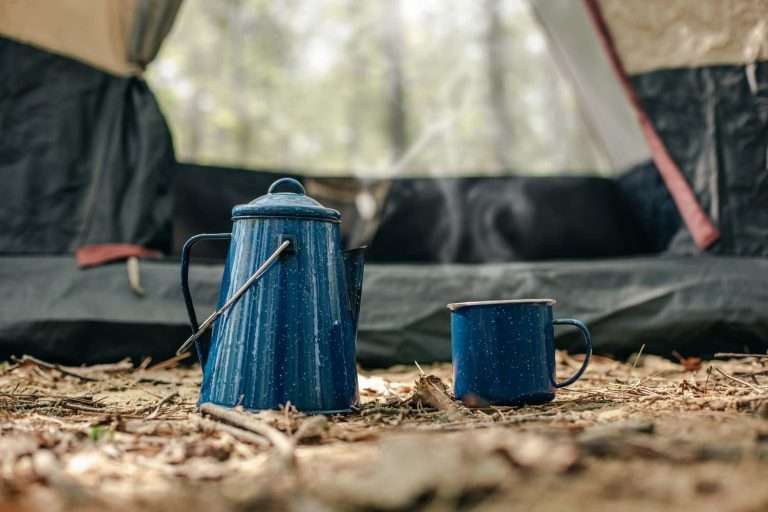How Much Coffee To Use In A Percolator What You Need To Know
How much coffee to use in a percolator is greatly determined by the type of coffee, the number of cups brewed, and coffee’s strength. Unlike the marvel drip coffee maker always giving a smooth light flavorful finish, the percolation process results in a stronger, bolder coffee cup.
While percolators are somehow foreign in our generation, they are still widely used and surprisingly easy to use. Percolators operate a cup system in that the coffee is brewed in cups, not drips. The brewing cycle involves high temperatures and regulated timing for perfect results.
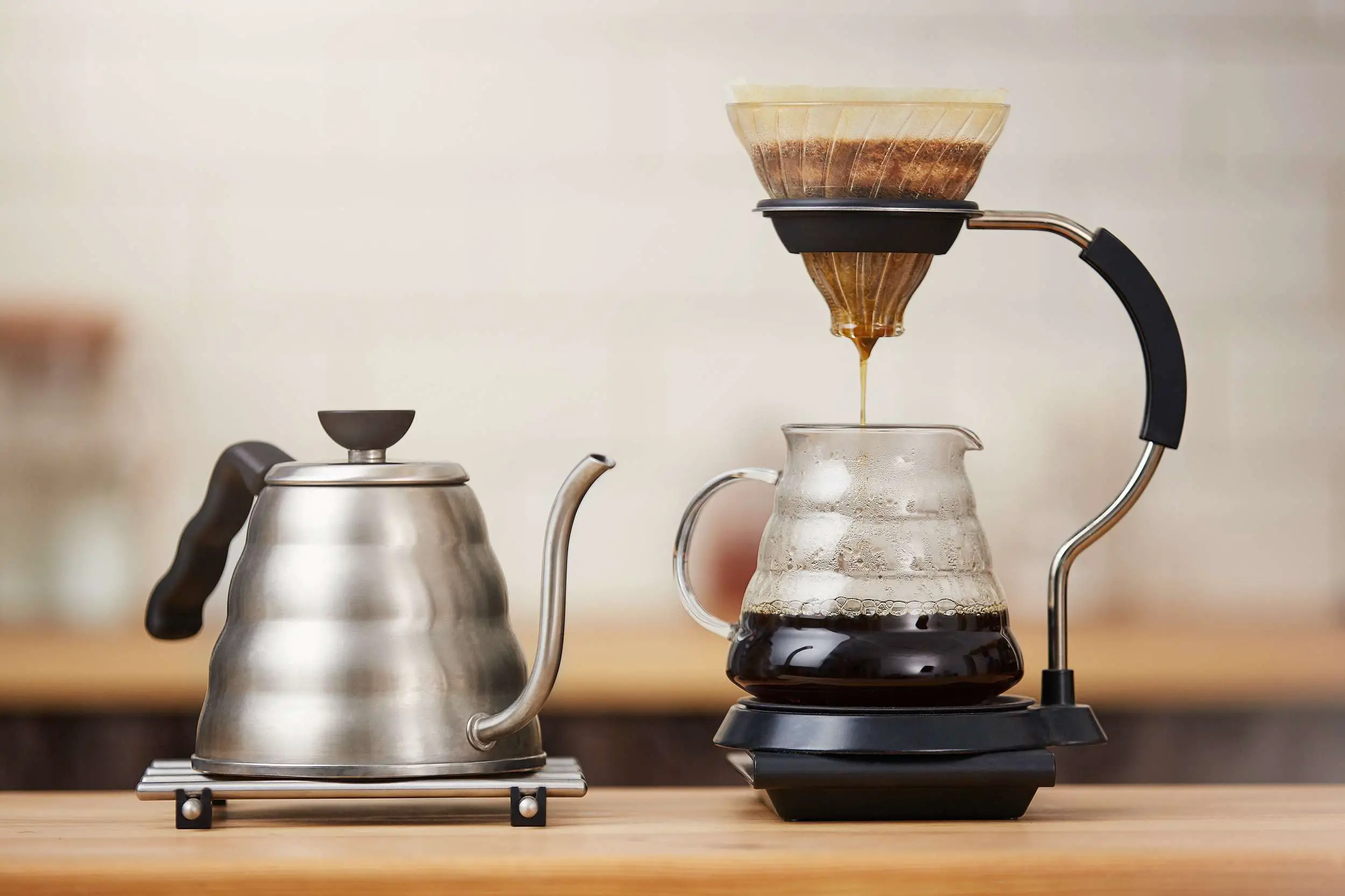
Percolators come in stove-tops and electronic variants. Stovetops are versatile as they can be used in-house or outdoors, while the electric percolators are best suited for indoors and quite convenient. Stovetops require heat source and supervision, but electronic ones are automated with correct temperatures and timing settings.
So before we get into how much coffee grounds go into a percolator, let’s catch up on where it all started and what it is all about.
The History of Percolators
Like every other tool, necessity is the mother of invention, and for percolators, this stands to be true. There is an unending dispute regarding who invented the alchemical way of coffee brewing, but the most known inventor of the percolator is Hanson Goodrich, who patented the tool in 1889 as stove-stops.
After the patent, the percolator became known and used by many households. The more reason why Goodrich holds the most solid ground.
But before him, research shows that the percolator was originally invented by an American soldier and scientist Count Rumford and its first patent was by James Mason in 1865.
The percolation method was invented as an alternative to the infusion-process of extracting flavors from coffee by soaking it in the water for some time or decoction- a process of heating the coffee in water to extract the required flavors.
Percolator Brewing Cycle
Percolation is the moving and filtering water through porous –coffee grounds. Before the cycle starts, you first add your required amount of water to your percolator.
Place your grounds on the filter plate, cover with the lid, and place your pot on heat. Heating essentially starts the brewing as heated water creates a steam-powered vacuum resulting in water being sucked up into the tube that runs from inside the pot to slightly above the layer of ground coffee spraying it over the ground.
Sprayed water extracts flavor from the ground through the percolation method in the metal filter and drops back into the pot’s bottom chamber.
This cycle is repeated several times as the water boils. It finishes when the brew drains into the holder for dispensation. You can serve and add your sweetener of sugar or cream.
The Kind Of Brew Before Knowing How Much Coffee To Use In A Percolator
Percolation method always results in a strong, bold brew due to over-extraction. This is to say you are getting a double brewed bold coffee due to the repeat brewing cycle. To keep the coffee flavor and avoid bitterness, always regulate too high temperatures and brew within four and eight minutes.
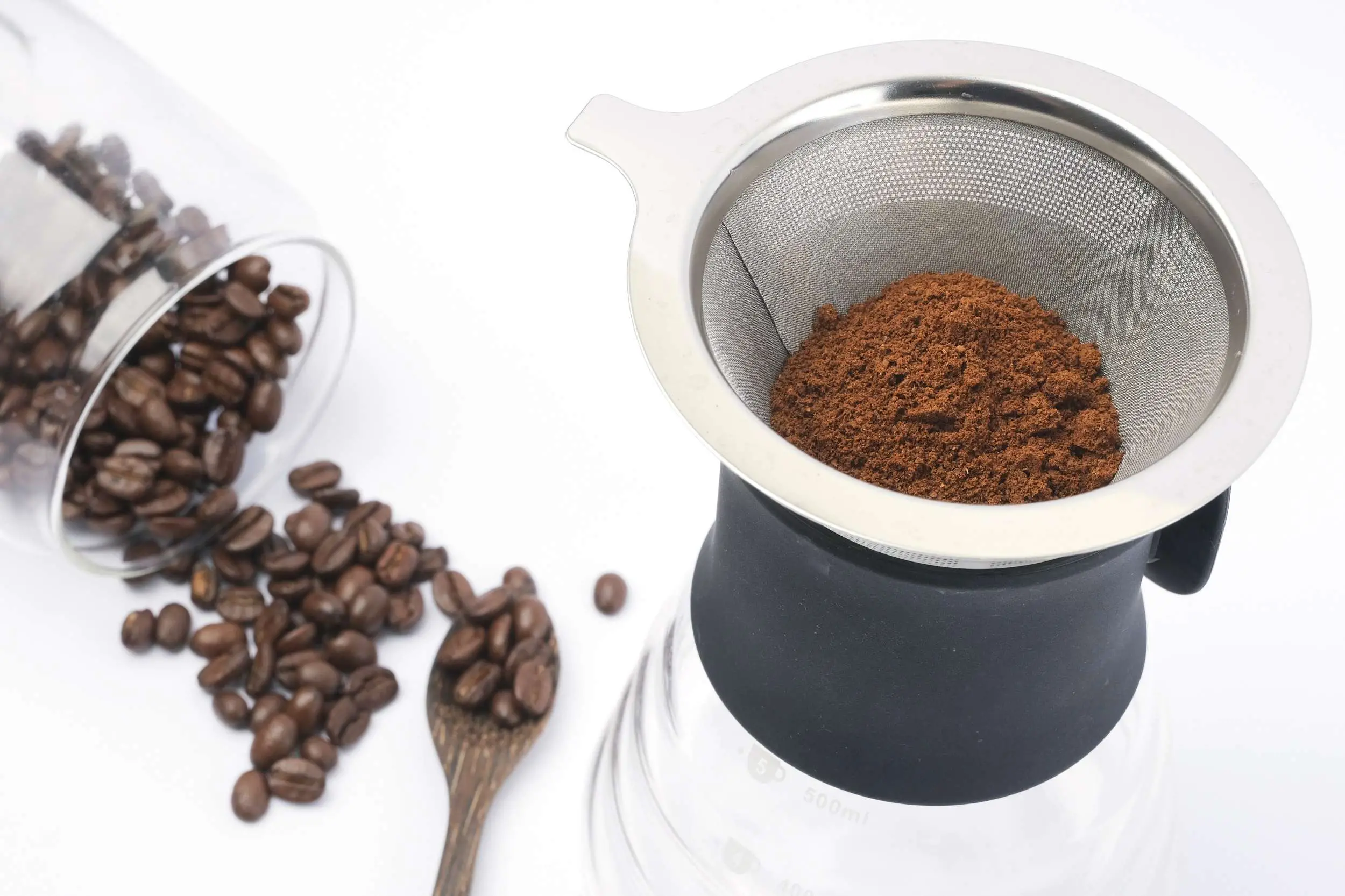
Size Of Brew
Percolators cup system is ideal if you are making coffee for a larger number of people compared to the drip system. It can brew more than ten cups at a time compared to the drip coffee maker with a max of two cups. For your brewing needs, determine how many of you will be using it before deciding the tool.
Recommended Coffee Measurements for Various Percolator Sizes
| Percolator Size | Number of Cups | Amount of Coffee |
|---|---|---|
| 4 cups | 4 | 1/4 cup |
| 6 cups | 6 | 3/8 cup |
| 8 cups | 8 | 1/2 cup |
| 10 cups | 10 | 5/8 cup |
| 12 cups | 12 | 3/4 cup |
| 20 cups | 20 | 1 1/4 cups |
| 30 cups | 30 | 1 7/8 cups |
| 40 cups | 40 | 2 1/2 cups |
| 50 cups | 50 | 3 1/8 cups |
| 100 cups | 100 | 6 1/4 cups |
Again, please note that these measurements are general recommendations and can be adjusted based on personal preference.
In What Ratios Do You Add Your Grounds To Your Water?
How much coffee to use in a percolator depends on the brew size, the kind brew and the type of percolator you have. For a larger brew size, which is making coffee for a lot of people, you will be using more coffee grounds and will need a larger size pot.
For the kind of brew, determine if you need a strong hard, medium taste or a light coffee. Strong coffee will need more ground compared to light coffee.
Generally, for percolators, one teaspoon of coffee grounds equals one cup or 5 ounces of water. Grounds used in percolation are usually coarse grind since the steel filter basket has large holes. With a ratio of 1 tps to 1 cup, note how much your pot holds to know how much ground goes into your percolator and how many servings.
Depending on your audience, you can maintain or decrease the number of grounds for a desirable end product. Reducing the ground to half a teaspoon per cup will result in a lighter or medium strength coffee, which is usually most preferred. Adjust accordingly to your preferences.
If using a coffee measuring cup, use a full cup for a strong coffee, three quarter coffee measuring cups for a medium strength, and half of the measuring cup for a light coffee.
For example, for 12- 18 cups brew size, you need about 1 – 1 ¼ coffee measuring cup, medium strength.
How Much Coffee In A Stovetop Percolator
A Stovetop percolator is made up of a pot where your water goes in, a stem tube that pulls water, the basket where grounds are placed, the basket lid, and a glass globe that allows the view of the percolation process. With all these components, the stovetop is a simple, sturdy stainless steel manual tool for brewing.
Stovetops come in different capacities, so you only need to get the ratio correct to fit your no of servings. Brewing in a stovetop will usually take more time than a drip coffee maker.
It also demands higher concentration and monitoring by increasing the temperatures bit by bit as water heats, reducing it immediately the water heats, and only allows it to perk for a max of 5 minutes.
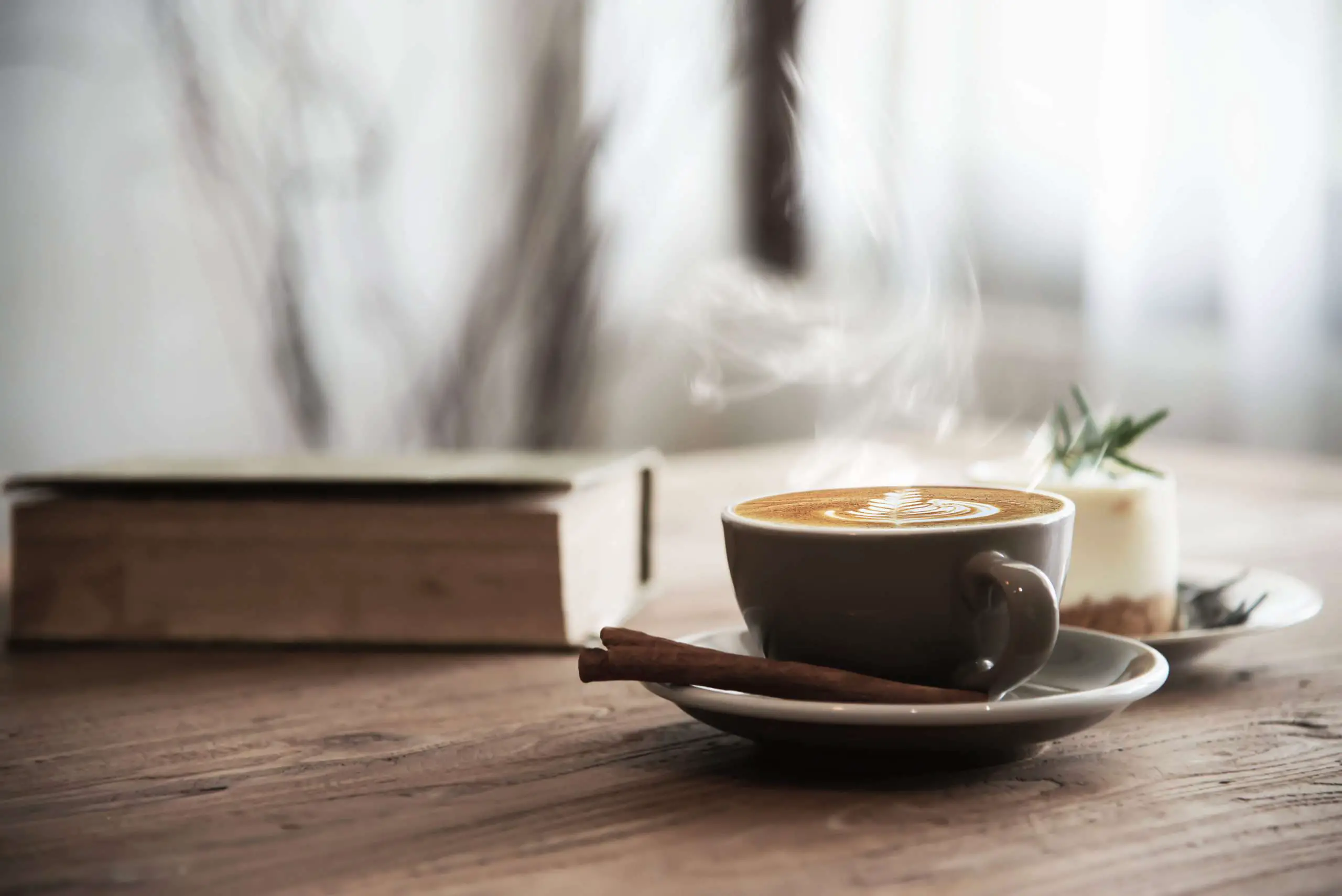
Read More:
How to Buy a Stovetop Coffee Percolator
How Much Coffee In An Electric Percolator
An electric percolator is a normal percolator that uses electricity as its heat source and is automated to control the water temperature and the percolation length.
It contains all parts of a percolator only with additional automated settings. You plug it into an electric source, and the brewing process commences immediately.
The ratio of coffee grounds to water is dependent on the preferred coffee strength and capacity of your pot. As an electric appliance, it is a bit more sensitive than the stovetops.
For longer service, high maintenance standards are required. First, your electricity source must be the correct voltage. The grounds should be coarsely ground so as not to leave residue on the bottom of the pot. Clean all the parts individually and do not submerge the pot in the water while cleaning.
How Much Coffee In A Large Percolator
A large percolator can either be an electronic or stovetop with a high capacity. The amount of coffee ground to place is subject to strength. For a dark coffee, add two coffee measuring cups for every 12 cups of water. Divide the ratio accordingly to fit your serving or brew size.
How Much Coffee In A Big Percolator
Percolators can brew coffee for large numbers into the hundreds. Usually, when brewing for masses, it is always best to keep the coffee on medium strength.
Most percolators brew about 12 cups of coffee at a time. For a medium strength coffee, we will add 1 cup coffee grounds for the 12 cups brewed. The ratio works well for a lot of people whom you don’t know their coffee preference.
How Much Coffee In A 100 Cup Percolator
For a stovetop percolator with a 100 cup brew size, and using our ratio of 1 cup of coffee grounds for 12 cup brew size. 100 brew sizes will fairly require about 7-8 cups of grounds for a medium strength and about 10 cups for strong dark coffee.
How Much Coffee In A 30 Cup Percolator
If using an electric percolator to serve a 30 cups brew size. It could take you about 12minutes to complete the serving, and 2 cups of ground coffee should be enough for dark coffee and only a cup for light coffee.
How Much Coffee In A Camping Percolator
Camping percolators are generally small capacity and stovetops. Preferably pick out a reasonable small-sized percolator of about 25ounces or below for your camping.
Made from stainless steel, you can heat the pot by grilling, using a camping stove or over a campfire, and have your rich dark and delicious coffee. For 25 ounces of water, that is 5 cups; you will need about five teaspoons of coarse coffee grounds.
How Much Coffee In A Farberware Percolator
Farberware percolator is your go-to option for electric percolators. With a small 8 cup capacity, the percolator is a suitable brewer for individuals who want fast coffee and have no time to watch over the pot as it brews.
Manufactured and distributed by Black and Decker, a super brand renowned for its industry rating in producing quality and high-performance home appliances.
The farberware percolator stands its ground as an electric brewer with excellent performance, function, and form. It comes with automated settings for controlling water temperatures and timing as it brews. It also allows adjusting the brewing time to your preference.
Its main features include a stay-cool handle that you can hold when serving. It tends to get hot as a stainless steel pot as heat goes through it, so the stay-cool handle comes in handy. It also features a keep-warm function that keeps your coffee warm for some hours.
Overall, farberware is constructed with attention to detail. Has a stylish look with sleek lines on the pot. Enjoy your coffee from this budget-friendly, high performing farberware percolator.
Considerations When Choosing A Percolator
We all want a convenient tool that is reliable and functions as expected. While picking out a percolator, it is important to know what to look out for in the selection process.
Purpose of buying
Obviously, you want to brew coffee, but consider where you intend to use the percolator. If you are buying for outdoor use like camping, stovetops, and smaller sized lightweight percolators, it should be ideal.
They are an easy carry and can be used over camping fire or stove to brew. You Electronic percolators are not suitable for outdoor events as they can be slightly bulky with cords, and you’ll rarely get a power source out in the fields. For home use, both stove stops and electric percolators do it; you only have to select your preferred choice.
Material for construction
Almost all percolators are made from stainless steel. Stainless steel is sturdy for longer service. Caution is required when handling the pot after brewing as stainless steel gets quite hot, to avoid burning oneself.
Brew strength and flavor
The brand and design you select should have the correct construction to facilitate its function. Achieving the required brew strength to serve the desired brew size is largely dependent on how well the function is made. Selecting from a popular brand with good reviews will help get the required percolator.
Automation functions
A feature only in electronic percolators comes with set timers for brewing, set temperatures in max degrees allowed, and adjustable timings.
Advanced options have a stay-cool handle that allows you to handle it even when the pot is still hot, detachable cords for easy serving, and a ready button to indicate when your coffee is ready to serve. You also get a keep-warm function to keep your drink warmer for a while after brewing.
For these percolators, ensure all the automation functions work.
Convenience
While this was the main killer for percolators compared to drip coffee makers, the electronic models are quite convenient for those who have no time checking temperature and monitoring brewing time.
But if you are a real die-hard, you wouldn’t mind learning the machine in maintaining the temperatures and required brew time. You’ll be sure to get your strong dark coffee just as you like it.
Considerations For Using A Percolator
Temperature
The most important factor after setting up your tool is the temperature for the stovetops percolators. You will be required to monitor the water temperatures and be sure to remove from heat once the percolation process begins.
This ensures the water isn’t overheated. For the electronic one, though set temperatures, it should be between 180-200 degrees and control the perking process to not above five minutes. Higher temperatures can lead to excess over-extraction and result in much bitter coffee.
Ratio and serving
The amount of ground you add to your percolator should be direct proportion to the number of serving and strength of coffee. Using the standard coffee measuring cup, you’ll determine the amount with consideration to the strength of the coffee you want.
Type of Coffee & Roasting
Unlike drip coffee makers who can use any type of coffee grounds and roasting, percolators work best with smooth, full-bodied, medium roasted coffee.
Full-bodied coffee is known to be rich in flavor. Medium roasting is suitable for the percolation process as high roasting always gives bitter tea. The coffee grounds have to be coarsely grounded to not penetrate the filter basket and create a residue on the bottom of the flask since the filter basket doesn’t have filter papers.

Regions That Produce The Best Coffee For Percolation
Some of the best coffee grounds to use in a percolator come from different regions of the world; these include the Indonesian coffee –Sumatra, which offers a deep winey aftertaste that is gentle and comes out just right. The coffee is a full-bodied ideal for best results.
The next best is the Ethiopian coffee from the Sidamo region, which is also full-bodied coffee with an inviting floral aroma, It comes in citrus, maple, and spice flavors that offer a full feel of the beverage you are drinking.
Full-bodied Colombian coffee when percolated results in an enhanced taste and satisfaction for the drinker. It is quite famous for dark, strong coffee, so it’s best to check on the ratio if you don’t want it to be hard. But if you are in for the caffeine, you are good.
Guatemala also offers a rich coffee with a smoky distinctive flavor that offers the best results with percolation. Add in sweeteners, cream, or sugar for the best experience.
Percolation works best with full-bodied coffee, but you can also try the light-bodied coffee from Peru, aromatic, light, and flavorful.
Conclusion
As the world increases in the number of coffee drinkers, we can only need more percolators and have greater minds. Drip coffee makers pose a tough completion for the percolators, but a large population still uses them for their daily brewing. Drinkers who are out for really strong coffee percolators are their best choice.
In a fast generation where percolators are foreign and slightly cumbersome for some, Innovations have seen electronic percolators solve the much-needed convenience. They handle the brewing and do it faster.
Get yourself the right percolator for your needs and smell the coffee.

